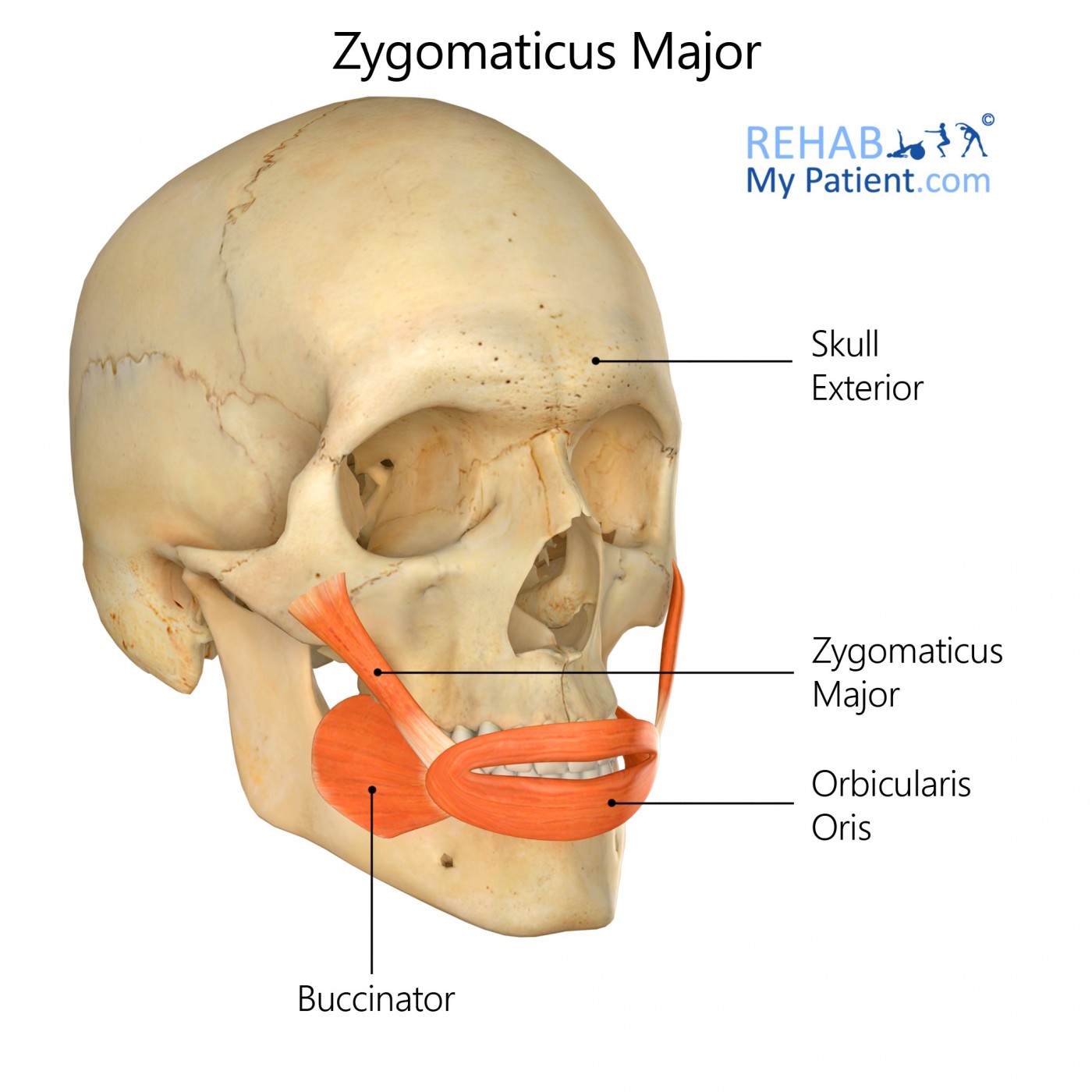
General information
The zygomaticus major muscle is located within the face and draws the angles of the mouth posteriorly and superiorly. Like all the muscles that control facial expression, the zygomaticus major is innervated from the facial nerve. It extends from the zygomatic arch all the way to the corners of the mouth. When a person smiles, the zygomaticus major muscle raises the corners of the mouth. Dimples can be caused from variations within the muscle structure.
Literal meaning
Greater yoke.
Interesting information
The zygomaticus muscle is what makes it possible for an individual to chew, speak, and use the face to show emotions. These muscles can become injured from trauma or overuse. Since they are connected with the jawbone and eye socket, irritation, injuries and disease of these areas can affect the zygomaticus muscle. Depending on the type of injury, rest may be all that is required to heal the pain. Chronic pain might indicate a serious condition that needs to be addressed.
Blood vessels running between the nose and the cheek can become trapped between the zygomaticus muscle layers. Using the facial muscles for an extended period of time, such as talking, smiling or chewing during social events, or physical trauma to the muscle can cause squeezed blood vessels. The zygomaticus muscle presses on the blood vessels that are trapped, which causes the flow of blood to become restricted. In turn, the muscles will end up cramping from a lack of nourishment. The pain felt resembles that of sinus pressure, but the cause lies on the outside of the cheekbone instead of from a sinus sac on the inside.
Origin
Lateral surface for the zygomatic bone located near the suture of the temporal bone.
Insertion
Blends into the fibres of the levator anguli oris and the orbicularis oris at the modiolus.
Function
Pulling the angle of the mouth laterally and superiorly.
Nerve supply
Facial nerve.
Blood supply
Facial artery.
Transverse facial artery.

Relevant research
This particular study investigated the psychophysiological effects for both negative and positive interventions in human-computer interaction after and during the intervention. 18 subjects were exposed to a pre-programmed mouse delay in a problem-solving task. After the mouse delays, three different conditions were implemented. Facial electromyographic responses were notated on the effects of the zygomaticus major and the corrugators supercilii muscles. All the muscles contributed to frowning and smiling. Smiling was a lot higher during the positive than any of the other conditions. Frowning reduced a lot more after the positive interventions over that of the no intervention condition. Results indicate that positive intervention can prove extremely useful.
Partala, Timo & Surakka, Veikko. (2004). The effects of affective interventions in human–computer interaction. Interacting with Computers. 16. 295-309. 10.1016/j.intcom.2003.12.001.
Zygomaticus major exercises
Lip pucker
This exercise helps to firm the muscles controlling the lip movements. Pucker the lips into a whistling or kissing position. Hold the pose for a five count before repeating for a total of 10 repetitions.

Sign Up
Sign up for your free trial now!
Get started with Rehab My Patient today and revolutionize your exercise prescription process for effective rehabilitation.
Start Your 14-Day Free Trial